How to insulate a cold apartment from the inside: suitable materials + installation instructions
Colds are approaching and you are thinking about wall insulation? Agree, I don’t really want to freeze in a cold apartment and receive monthly bills with space amounts for heating. But you decided to correct the situation, but do not know how to do it right?
We will help you - the article examined in detail how to insulate the apartment from the inside correctly, and what materials can be used for this. Detailed installation instructions for the insulation are provided, supplemented by a video.
The content of the article:
Types and features of insulation
It should be noted that wall sheathing with thermal insulation must be carried out in accordance with building codes and rules. If the wall of the apartment is insulated poorly, then moisture will accumulate in the heat-insulating layer, and subsequently mold and fungus will form. We talked about mold control methods on the walls. here.
If it is impossible to carry out measures for external insulation, the internal laying of thermal insulation will need to be performed as competently as possible.
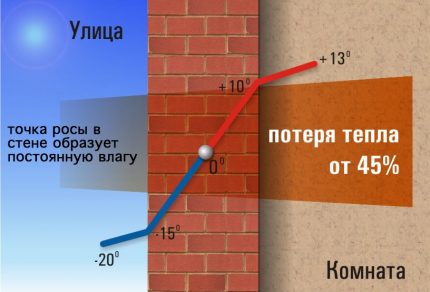
Moreover, it is extremely important to choose high-quality vapor and heat insulating material, to carefully seal cracks and joints, to ensure good ventilation in room.
But before performing insulation work, it is necessary to choose the right materials that will be guaranteed to fulfill the function of heat conservation.
Among the building materials existing on the market, we will consider the most popular types of insulation, highlight their advantages, disadvantages and nuances of installation.
Option # 1 - stone wool
The loose material is flexible, so for its installation it will be necessary to manufacture a crate from a metal profile. After the insulation layer, it will be necessary to sheathe the frame with drywall, after which only the walls should be finished.
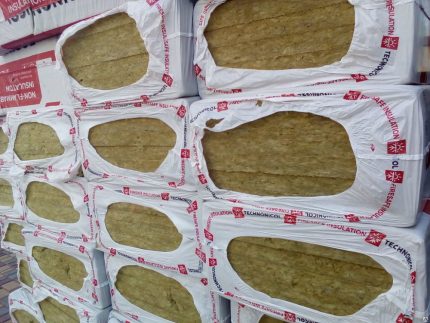
Main advantages:
- good thermal insulation performance - It is considered universal, has high rates of heat conservation;
- fire safety - prevents the spread of fire, can withstand up to 1000 ° C;
- biological and chemical resistance - the material does not collapse under the influence of chemicals, prevents the appearance of mold spots;
- soundproofing - provides sound protection in the room;
- steam transmission properties - maintaining natural air exchange;
- environmental friendliness - does not emit harmful substances.
In addition to the advantages, the material has several disadvantages. Some of them are the need to use gloves when working with mineral wool, it is forbidden to allow contact with moisture, and steam and waterproofing should be additionally used for thermal insulation.
Option # 2 - glass wool
A variety of mineral wool, characterized by a smaller fiber diameter and a longer length, as well as the material of manufacture - the molten glass acts as a raw material.
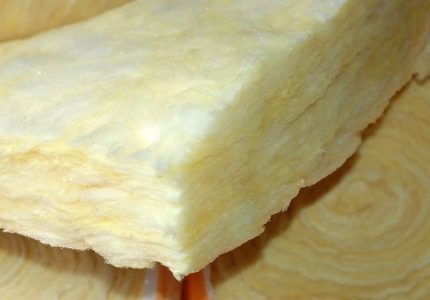
However, it serves much less - only 10 years. During installation, the material gives up to 80% shrinkage. It is necessary to work with him in overalls, gloves and a mask, since the fibers have the property of high fragility.
Option # 3 - extruded polystyrene foam
The material is made of polystyrene foam by extrusion — extruding the prepared mass from an extruder. As a result, material is obtained from small closed cells of the same structure, up to 2 mm in size.
On the market you can find such a brand of EPS as Penoplex boards. It is often used to warm wall structures, but it has a high combustibility class - from G3 to G4. We examined the characteristics of Penoplex thermal insulation in more detail in this article.
EPPS is characterized by high thermal insulation properties, as well as:
- low heat conductivity;
- resistance to loads and deformation;
- water absorption coefficient - up to 0.5%;
- absolute biostability;
- low weight;
- durability;
- ease of use.
Among the disadvantages of the material is a low level of sound insulation and the possibility of using in temperature conditions from -70 to +75 ° C.
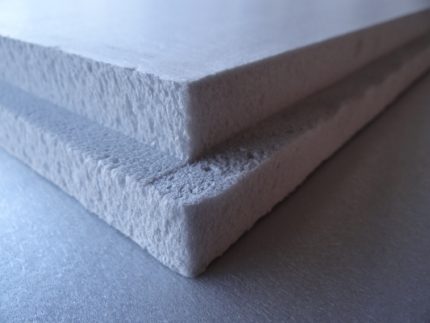
Such material does not absorb water and will not allow moisture to form at the dew point.
However, when using it, one should not forget about the bridges of cold. It is necessary to carefully insulate the junction of the plates and their contact with the wall using foam or use it to join the plates together. Keep in mind that polyurethane foam will need to be applied over the entire plane of the sheet, leaving no cracks and gaps.
More about the advantages and disadvantages of extruded polystyrene foam we wrote in another our article.
Option # 4 - expanded polystyrene foam (polystyrene)
The material is considered environmentally friendly and absolutely safe for use as thermal insulation of walls inside the apartment. Its relevance in construction is explained by the best indicators of heat, sound, and waterproofing of the material.
Type of material marked PSB-S It is a polystyrene foam type, in which the micropores are filled with a special non-flammable gas. The composition of the material includes a substance with self-extinguishing properties in case of fire - flame retardant.
This type of foam does not support combustion, has a combustibility class G1 and is marked on the packaging with the letter C.
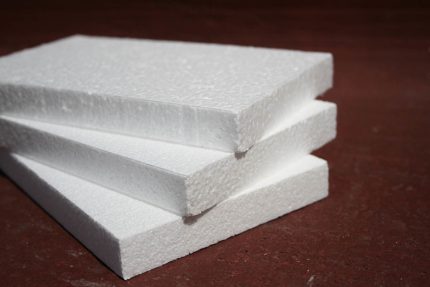
The material is recommended to be used as insulation, since it has low flammability, does not spread fire and goes out within the first few seconds.
Another type of foam marked PSB, unlike the previous type, does not have the specified fire safety properties and is classified as G3, G4.
It does not include substances that prevent the spread of fire and are used mainly for the manufacture of packaging containers. Therefore, it is better not to use such material for thermal insulation.
Among other materials PSB-S has the following characteristics:
- environmental friendliness;
- low specific thermal conductivity and water absorption;
- provides fire safety;
- has good sound insulation;
- resistant to the formation of microorganisms on it, moldy fungi;
- lightweight and inexpensive;
- easy to use;
- durable.
However, during its installation, do not allow esters, kerosene, acetone-containing substances, gasoline to hit the surface, which may partially or completely damage its porous structure.
Option # 5 - liquid nanothermal insulation
An innovative material with thermal insulation properties, which in combination provides protection against the formation of a humid environment inside, corrosion processes, atmospheric influences, as well as noise insulation.

They can be used to warm various types of surfaces - concrete, brick, wood and others.
Pros:
- universality;
- comprehensive protection;
- high level of quality;
- ecological cleanliness;
- safety;
- simple installation;
- low consumption.
Buyers note that the substance is easy to apply to the surface, even in hard to reach places, but can not be used at temperatures below 5 ° C.
Option # 6 - polyurethane foam
A similar appearance to the previous version, which is applied to the surface by spraying from special equipment. If you do not have the necessary devices for this, it is better to order such a procedure from specialists.
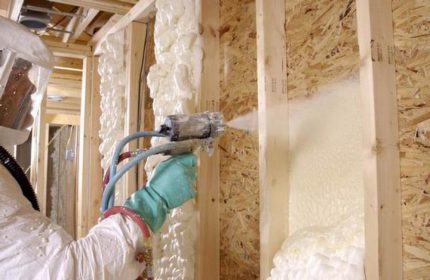
When using this material, it is not necessary to additionally lay a waterproofing layer. In the process of spraying, the substance foams on the wall and dries quickly, leaving no gaps for the possible penetration of cold from the street.
Such a coating does not form gaps, there are no joints, cavities, but forms a single surface. Therefore, it is suitable for warming walls of any size and shape.
To finish the walls, you will need to glue the reinforcing mesh, plaster the surface, and then glue the wallpaper or paint it with a water-based composition.
Option # 7 - cork agglomerate
The technology for producing the material is a process in which granules made from balsa wood can be heat treated. At the same time, synthetic substances are not used, due to which the agglomerate is considered environmentally friendly.
Cork material has high thermal insulation properties, durable, meets established safety requirements. In addition, it provides a high level of sound insulation and prevents the occurrence of vibrations.
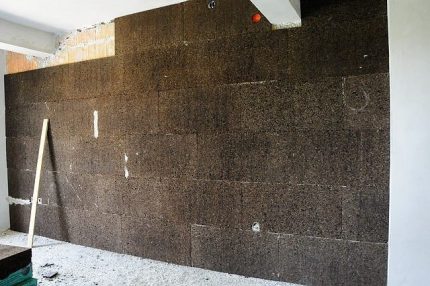
When using the material, you will keep dry and warm in the room, your health, and also save yourself from the problems of frequent replacement of the insulation due to rotting, deformation or the appearance of mold.
Option # 8 - fiberboard board
Thermal insulation material is intended for indoor use in wall, floor and other structures in order to give them increased elasticity, protection against sound penetration and heat outflow.
The plates retain heat well, which allows for a long time to maintain a stable temperature in the room. The material is made from wood fibers, which are pressed under the influence of high temperature.
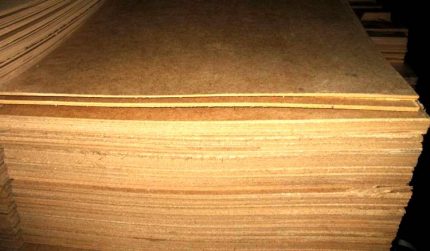
Therefore, when using this kind of insulation it will be necessary to additionally lay a vapor barrier layer.
One nuance should be highlighted - before installing the plates, it is necessary to maintain them in a room of a similar humidity level, where they will be laid.
Material insulation can be done by gluing, nesting in a pre-prepared building structure or by nailing to a wooden plane.
The material is malleable, easy to cut, and when installing overlap plates, joint sealing is not required.
Preparing walls before insulation
Before insulating the walls of a cold apartment, they must be prepared in a special way. This will prevent them from freezing, protecting against the formation of moisture in dew point, and prevent heat from entering the street.
If you have redecorated your room and wallpapers are glued on the walls, they will need to be removed from the part where the heat-insulating layer is supposed to be laid.
In the case when the walls are painted with water-based paint or whitewash, it is advisable to remove it by erosion. After the walls have completely dried, you will need to apply a primer mixture to them.
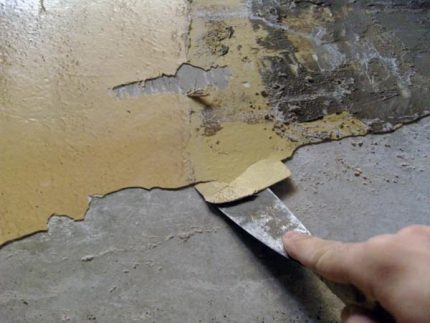
Old paint should also be removed to the maximum. If you fail to do this, the wall must be treated with a special primer for painted surfaces.
After cleaning and priming the walls with a cloth-serpyanka, you need to glue the corners and areas between the floor and the walls. Existing cracks and cracks in panels or masonry should be pre-repaired with foam, gypsum, cement or another substance.
If there are wide gaps, you need to fill them with tow, and then use the foam to completely eliminate them.
When the wall surface is fully prepared for laying thermal insulation, proceed with the direct installation process.
DIY warming instructions
Due to the variety of thermal insulation materials, you can choose any of those on the market to warm your room.
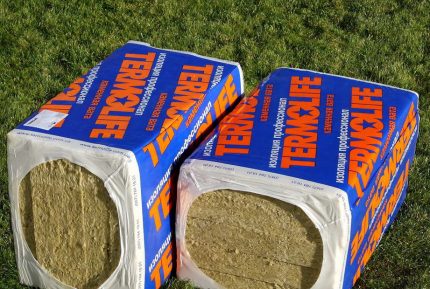
Consider in detail the most popular options for internal thermal insulation of the room.
Method # 1 - mineral or glassy
For laying the material, it will be necessary to make the frame from the profiles and prepare in advance sheets of drywall for the purpose of subsequent closure of the structure.
It is better to buy gypsum plasterboards moisture- and fire-resistant - they will additionally protect the insulated wall from the penetration of dampness from the outside.
Step-by-step instructions for laying thermal insulation material:
- Set the profile along the entire perimeter of the wall, along the ceiling, walls, floor, and also make partitions between them with a step of 30-40 cm.
- Place mineral wool or glass wool in the prepared cells, leaving no empty spaces.
- Tightly cover the structure with thermal insulation with a vapor barrier film, make inlets within 20-30 cm on the floor, ceiling, adjacent wall.
- Glue the vapor barrier material tightly to the floor and wall using double-sided tape.
- Cut drywall sheets with a construction knife into pieces of the required size.
- Install them using a screwdriver.
- Remove excess steam barrier with a knife.
- Joints, cracks and holes with self-tapping screws finish with finish or acrylic putty.
- After drying, smooth the surface with putty.
- Wait until it dries completely, then sand the wall with a fine mesh.
After completing the entire procedure, prime the surface and after a few hours it will be ready for decoration with decorating materials.
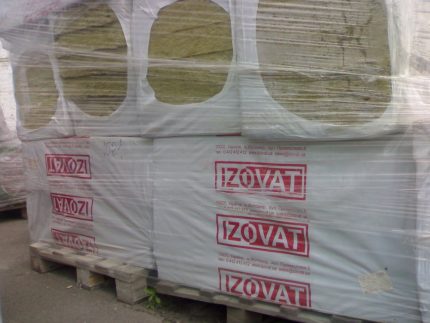
Such mineral wool has improved insulating properties, in comparison with other similar materials. It can also be used to sound insulation the ceiling.
Method # 2 - PSB-S polystyrene
The universal and most popular type of insulation, which is widely used in construction due to low cost and decent heat saving indicators. Choose high density material with a width of 35-50 mm or more.
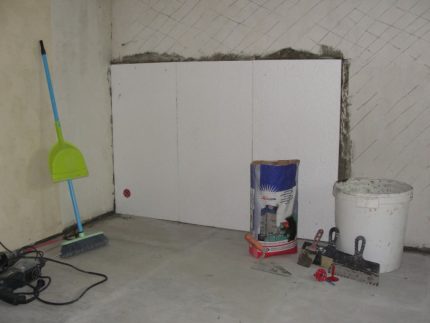
The frame method is performed according to a similar scheme, as with mineral wool insulation. Consider the method of gluing to a plane in more detail.
Follow this order of work:
- Apply an antifungal primer to the walls you plan to insulate in order to prevent mold formation in the subsequent.
- Wait until the surface is completely dry.
- Install the waterproofing layer - this will provide additional moisture protection.
- Mix the adhesive solution in a bucket or other container manually or with a drill and nozzle whisk.
- Start fastening the sheets from the lower left corner and stack them in a checkerboard pattern.
- Measure the width and length of the plate necessary for placement on the wall and carefully cut a piece.
- Glue the prepared part of the material using the prepared mixture.
- After the entire procedure, leave the wall to dry for 1-2 days.
- If you wish, you can additionally fix the foam with umbrella dowels: in the insulation, drill 5-6 holes along the edges and in the middle, then drive in the dowels and plastic nails.
- Cover wide joints with foam without any substances that could damage the material - read the instructions. It is enough to cover narrow cracks with glue mix.
- The final stage is the installation of the reinforcing mesh by applying an adhesive or putty base to the surface, which will give the structure greater reliability.
- After drying, level the surface with finishing putty.
Before wallpapering the walls, be sure to apply a primer to the surface.
In addition to the presented methods of laying insulation, you can perform thermal insulation using other materials.
If you have a loggia, it is also advisable to insulate it. Guide to self-insulating the loggia we gave in next article.
Conclusions and useful video on the topic
Rules for choosing a heater for an apartment:
What insulation is better to use:
Features of laying insulation from the inside of the room:
If you decide to economically insulate your home, use budget options using polystyrene foam or mineral wool. If you do not want to reduce the useful living space in the room, we recommend using ultra-modern methods of applying liquid thermal insulation by spraying or painting.
For connoisseurs in materials of environmental cleanliness and safety it is better to give preference to insulation of natural origin - from wood, cork or other compounds.
You have successfully insulated your apartment and now want to share the best practices with other visitors to our site who also want to do insulation? Write your recommendations, add unique photos of the process of self-insulation and photos of the finished work. And also ask questions to our experts in the comment block under this article.

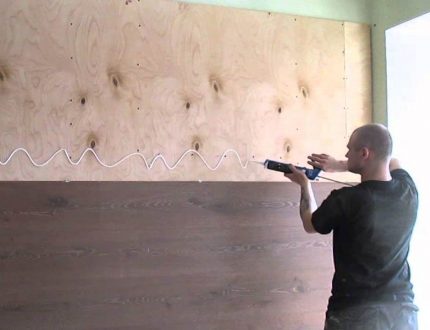
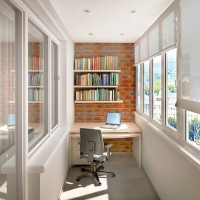 How to insulate a loggia: options + instructions for installing a do-it-yourself warming system from the inside
How to insulate a loggia: options + instructions for installing a do-it-yourself warming system from the inside 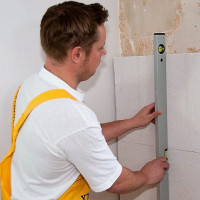 How to insulate the wall in the apartment from the inside: the best technology + workflow
How to insulate the wall in the apartment from the inside: the best technology + workflow 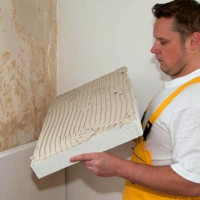 Types of insulation for the walls of the house from the inside: materials for insulation and their characteristics
Types of insulation for the walls of the house from the inside: materials for insulation and their characteristics 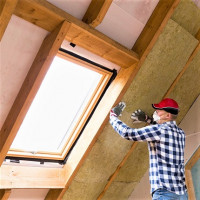 The better to insulate the attic: the best thermal insulation materials for arranging the attic roof
The better to insulate the attic: the best thermal insulation materials for arranging the attic roof 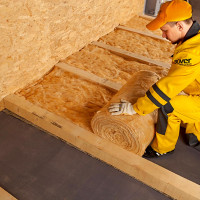 Insulation for the floor in a wooden house: materials for thermal insulation + advice on choosing insulation
Insulation for the floor in a wooden house: materials for thermal insulation + advice on choosing insulation 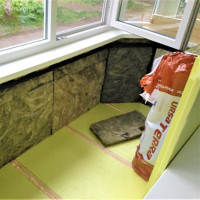 Do-it-yourself warming the balcony: popular options and technologies for warming the balcony from the inside
Do-it-yourself warming the balcony: popular options and technologies for warming the balcony from the inside  How much does it cost to connect gas to a private house: the price of organizing gas supply
How much does it cost to connect gas to a private house: the price of organizing gas supply  The best washing machines with dryer: model rating and customer tips
The best washing machines with dryer: model rating and customer tips  What is the color temperature of light and the nuances of choosing the temperature of the lamps to suit your needs
What is the color temperature of light and the nuances of choosing the temperature of the lamps to suit your needs  Replacement of a geyser in an apartment: replacement paperwork + basic norms and requirements
Replacement of a geyser in an apartment: replacement paperwork + basic norms and requirements
At first I was seduced by an advertisement for some kind of nano-putty, supposedly insulating as well as thick polystyrene. Only money and time wasted. I did not want to reduce the area of the room due to the insulation, but I had to, because the room was angular.
He made thermal insulation from polystyrene with a thickness of 5 cm. Everything is smart, he, by technology. Wallpaper was pasted on top, now I even forgot that I have two walls in polystyrene foam. I stopped damping the corner, so there is a result!
I used Penoplex boards during the repair. It does not crumble like expanded polystyrene foam. Although it costs, of course, a little more expensive. I did not even consider the option with fiberboard. The thermal insulation from it is weak, and the subsequent surface finish after installation of the plates is complicated. It is necessary to process the walls in several layers with PVA glue with intermediate drying and only after that you can paste wallpaper. When the microclimate in the apartment changes, the wallpaper may begin to peel off.